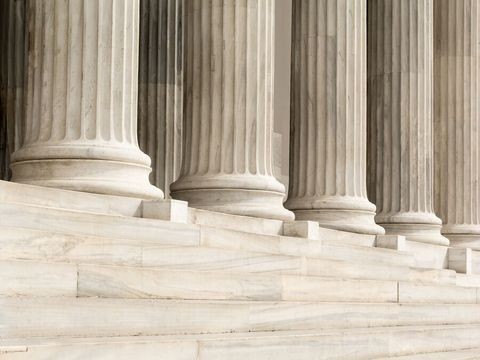Environmental Groups and EPA Settle Suit Relating to Particulate Matter Pollution in the San Joaquin Valley of California
Client Alert | 2 min read | 05.16.03
On May 14, 2003, environmental and community groups and the EPA lodged a proposed consent decree with the U.S. District Court for the Northern District of California which would settle an October 2002 suit against EPA. The environmental groups had challenged EPA's delay in responding to the high level of particulate matter pollution in California's San Joaquin Valley. The Valley suffers from some of the worst air pollution in the nation. It is also one of the nation's major crop, poultry, and dairy farming centers, which has some environmental advocates and regulators looking to agricultural operations as a prime candidate for regulatory controls.
The suit alleged that the San Joaquin Valley Air Pollution Control District ("the District") had failed, repeatedly, to provide an acceptable plan for controlling particulate matter, or PM 10 , pollution in the San Joaquin Valley. Under the federal Clean Air Act, if a state fails to provide an acceptable "state implementation plan" within prescribed deadlines, EPA is directed to promulgate a "federal implementation plan" within two years of the state's failure to act. Plaintiffs alleged that EPA had failed to develop such a federal plan to control PM 10 pollution in the Valley.
Particulate matter pollution generally consists of fine particles such as dust, fumes or smoke. PM 10 is particulate matter measuring ten microns or less (millionth of a meter, or less than one-tenth the width of a human hair). PM 10 has been the particulate matter regulated indicator since 1987. Plaintiffs, including Medical Advocate for Healthy Air, the Sierra Club, and the Latino Issues Forum, had formed a coalition in 1999 for the purpose of clearing the air in the Valley.
Under the terms of the Consent Decree, unless the District develops a plan by July 31, 2004 that EPA can approve, EPA will be required to provide its own plan federal implementation plan for controlling PM 10 pollution in the San Joaquin Valley. The plan must require implementation of "best available control measures" which is the level of control that the Clean Air Act requires for PM 10 nonattainment areas that are in the "serious" category. It is more stringent than the "reasonably available control measures" that would have originally applied. The Consent Decree will be published shortly in the Federal Register , but may currently be viewed at the Earthjustice website, http://www.earthjustice.org.
For its part, the District reports that it has already prepared a new plan that would reduce PM 10 pollution by 5% through the year 2005. The District's Board will vote on the plan at its June 16 meeting, and the California Air Resources Board may act on it as early as June 26. It may then be necessary to work out some differences with EPA over implementation of the "best available control technologies" that will be required. If difference can be reconciled, this could avoid implementation of a federal plan.
Insights
Client Alert | 5 min read | 12.12.25
Eleventh Circuit Hears Argument on False Claims Act Qui Tam Constitutionality
On the morning of December 12, 2025, the Eleventh Circuit heard argument in United States ex rel. Zafirov v. Florida Medical Associates, LLC, et al., No. 24-13581 (11th Cir. 2025). This case concerns the constitutionality of the False Claims Act (FCA) qui tam provisions and a groundbreaking September 2024 opinion in which the United States District Court for the Middle District of Florida held that the FCA’s qui tam provisions were unconstitutional under Article II. See United States ex rel. Zafirov v. Fla. Med. Assocs., LLC, 751 F. Supp. 3d 1293 (M.D. Fla. 2024). That decision, penned by District Judge Kathryn Kimball Mizelle, was the first success story for a legal theory that has been gaining steam ever since Justices Thomas, Barrett, and Kavanaugh indicated they would be willing to consider arguments about the constitutionality of the qui tam provisions in U.S. ex rel. Polansky v. Exec. Health Res., 599 U.S. 419 (2023). In her opinion, Judge Mizelle held (1) qui tam relators are officers of the U.S. who must be appointed under the Appointments Clause; and (2) historical practice treating qui tam and similar relators as less than “officers” for constitutional purposes was not enough to save the qui tam provisions from the fundamental Article II infirmity the court identified. That ruling was appealed and, after full briefing, including by the government and a bevy of amici, the litigants stepped up to the plate this morning for oral argument.
Client Alert | 8 min read | 12.11.25
Director Squires Revamps the Workings of the U.S. Patent Office
Client Alert | 8 min read | 12.10.25
Creativity You Can Use: CJEU Clarifies Copyright for Applied Art
Client Alert | 4 min read | 12.10.25
Federal Court Strikes Down Interior Order Suspending Wind Energy Development


